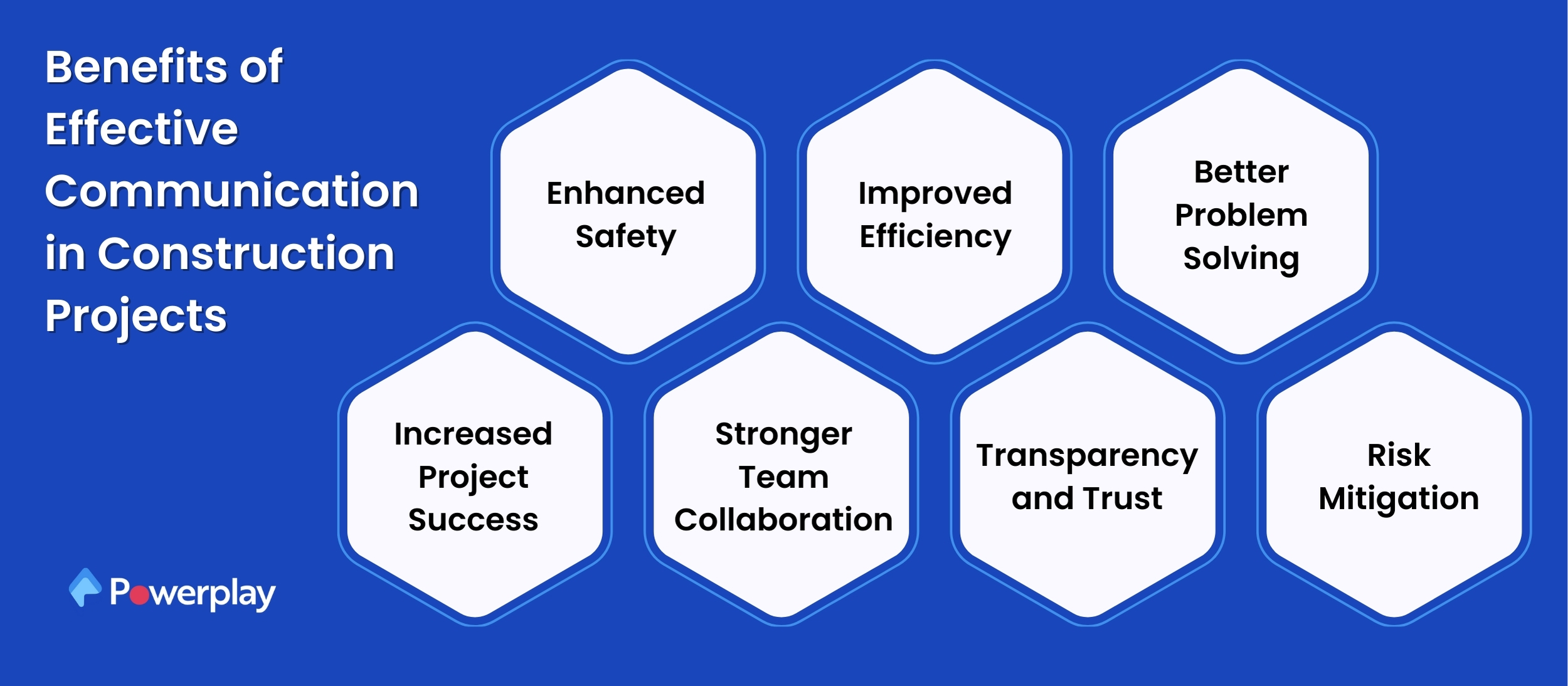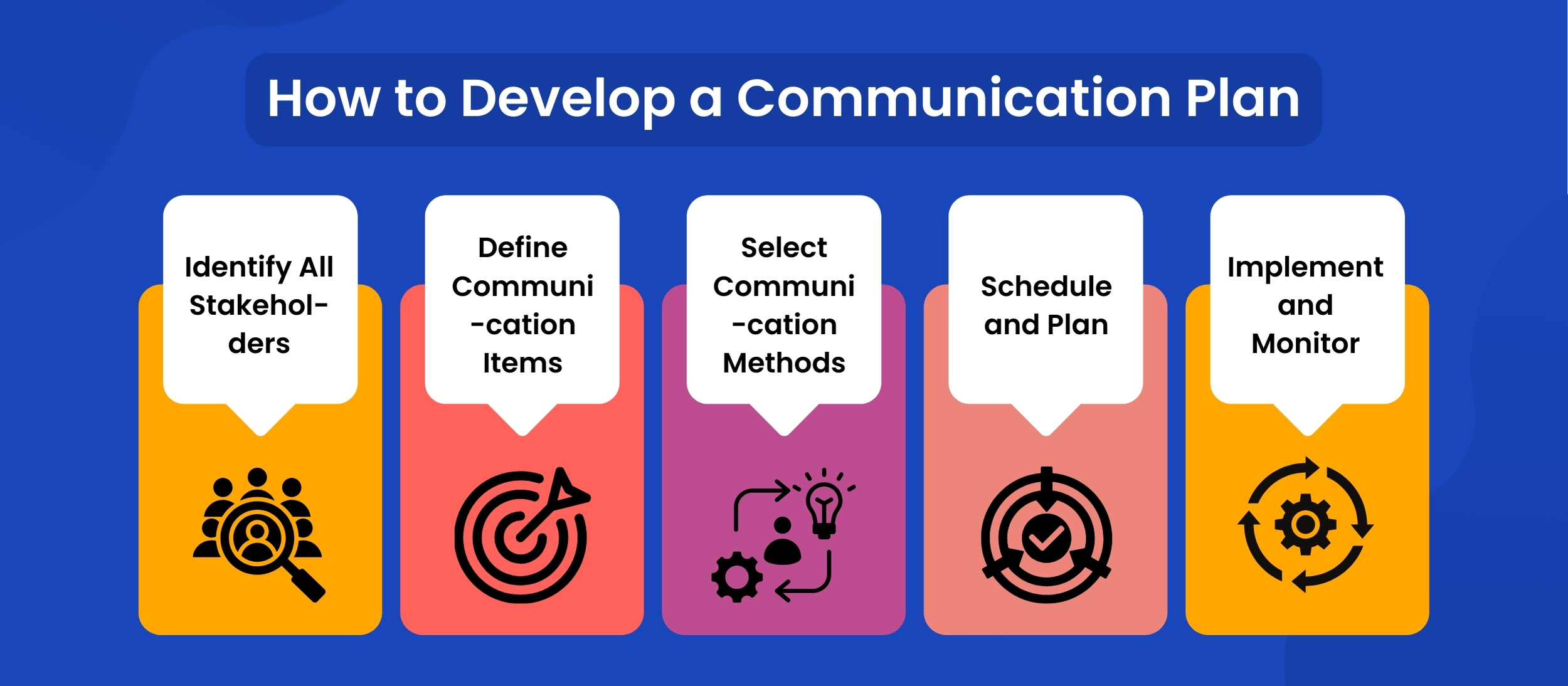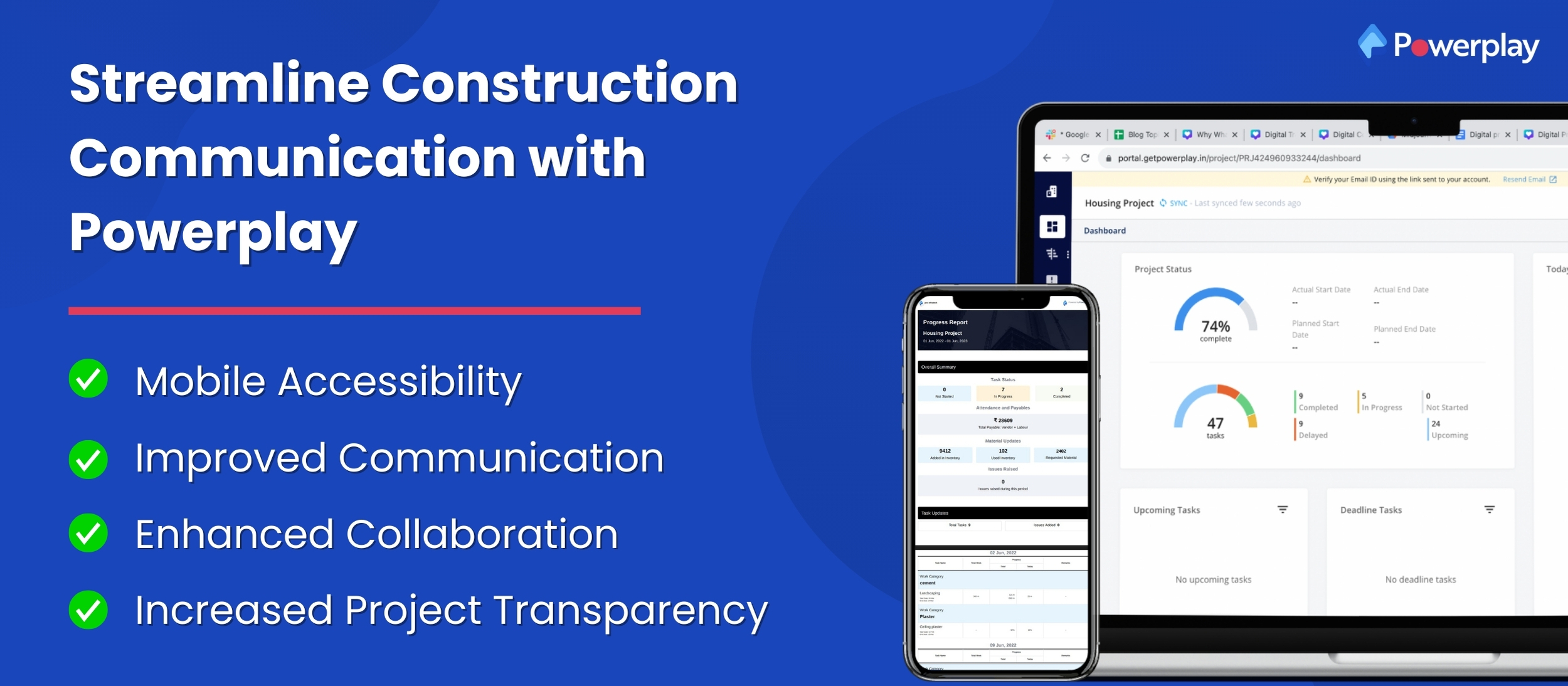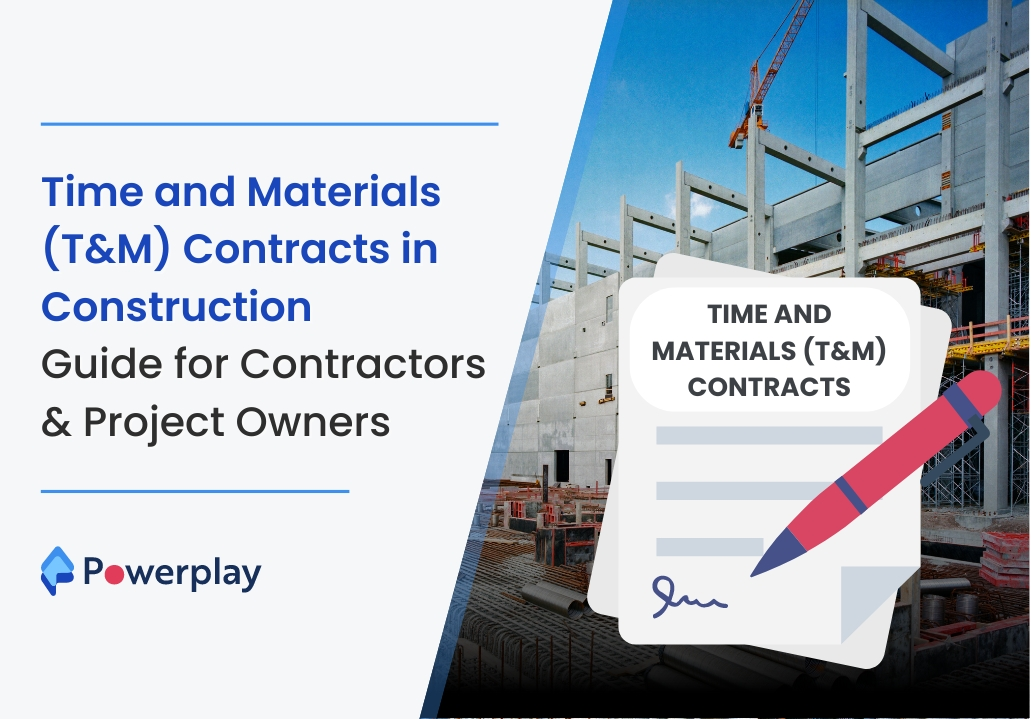The Ultimate Guide to Construction Communication
-
Sapna
- June 26, 2024

Effective communication in the construction industry is pivotal to the success of any project. It bridges the gap between various stakeholders, including architects, engineers, contractors, and clients, ensuring everyone is aligned with the project’s objectives and timelines. This guide delves into the intricacies of construction communication, exploring its significance in enhancing project efficiency, safety, and overall success.

In this blog, we have explored all the essential strategies, best practices, techniques, and tools that can further facilitate communication and optimal communication in the dynamic field of construction.
Table of Contents
What is Construction Communication?
Construction communication refers to the systematic process of sharing information, coordinating activities, and managing relationships among all parties involved in a construction project. This includes project managers, contractors, subcontractors, architects, engineers, and clients.

Effective construction communication ensures everyone is aligned on project goals, timelines, and specifications, minimising misunderstandings and delays. It involves various methods such as meetings, reports, emails, construction management software, and onsite discussions. By facilitating clear and continuous dialogue, construction communication plays a critical role in project efficiency, safety, and successful completion, helping to manage expectations and resolve conflicts promptly.
The Importance of Communication in Construction
Effective communication is a cornerstone of success in construction projects. It is vital that all project participants, from architects and engineers to subcontractors and clients, understand their roles, expectations, and project timelines. Clear communication minimises the risks of miscommunication, which often leads to costly delays, errors in construction, and budget overruns.
Regular communication in construction projects fosters a collaborative environment where every participant, from architects and engineers to subcontractors and clients, is an integral part of the construction process itself. This environment enables prompt resolution of issues as they arise and maintains alignment among stakeholders regarding project goals. Moreover, it promotes transparency, enhancing trust and accountability among all parties involved. Effective communication is not just about sharing information but also involves active listening, adapting messages to suit different audiences, and using appropriate construction communication software and technologies to ensure clarity and reach.
Maintaining robust communication throughout a construction project is more than just keeping everyone informed. It’s about creating an ecosystem where teamwork and efficiency lead to the successful delivery of projects. The strategic use of communication tools, such as project management software and regular team meetings, plays a crucial role in this process. Emphasising communication’s role in success can inspire and motivate the audience.
Benefits of effective communication in construction projects

Effective communication in construction projects brings many benefits crucial for any project’s success and smooth operation of construction companies. Here are some key advantages:
Enhanced Safety:
Clear communication helps maintain high safety standards by ensuring everyone on site understands and implements safety protocols and emergency responses.
Improved Efficiency:
Effective communication minimises misunderstandings and the need for rework, thus saving time and resources. It ensures everyone knows their roles and responsibilities, leading to better coordination and faster task completion.
Better Problem-Solving:
When the communication channel is open and clear, issues can be identified and addressed quickly, preventing small problems from turning into major setbacks.
Increased Project Success:
Keeping all stakeholders informed and engaged will ensure the project aligns with the client’s requirements and expectations and is completed within the budget and timeline.
Stronger Team Collaboration:
Regular and clear communication fosters a collaborative environment where ideas seek feedback can be shared freely, enhancing team spirit and cooperation among all parties involved.
Transparency and Trust:
Sharing regular updates about project progress and challenges builds trust and accountability among team members and stakeholders, which is fundamental to success.
Risk Mitigation:
By maintaining open lines of communication, potential risks can be identified early, allowing for proactive measures to be implemented, thus reducing the likelihood of costly delays and errors.
Challenges of Construction Communication

Here are five main challenges of communication in construction projects:
Cultural and Language Barriers: Construction projects often involve a diverse workforce, and language differences can lead to misunderstandings and misinterpretations of critical information, complicating task execution.
Lack of Standardised Communication Protocols: Without standardised methods for sharing information, important details can be lost or misunderstood. This lack of consistency can lead to errors and inefficiencies throughout construction.
Technological Disparities: The integration of technology in the construction sector varies widely among stakeholders. Some may use advanced project management software, while others might rely on outdated methods, causing a disconnect in how information is shared and received.
Inadequate Training in Communication Skills: Effective communication skills are crucial, yet not all team members might have adequate training. This can increase the risk of miscommunication, negatively affecting project outcomes.
Misalignment of Messages: Poor communication can lead to messages being sent to the wrong person or department, delays in the flow of information, and unclear instructions, all of which can cause project delays and increased costs.
Consequences Of Poor Communication

Poor communication in construction projects can lead to a variety of significant issues that affect the overall success and safety of the project:
Project Delays: Misunderstandings or missing information can disrupt timelines, causing delays that impact project schedules and lead to additional costs.
Increased Costs: Miscommunication often results in errors that require costly fixes, further inflating the project budget.
Quality Problems: Unclear instructions or specifications can lead to construction that does not meet required standards, impacting the quality and safety of the structure.
Safety Hazards: Poor communication can compromise safety, leading to accidents and injuries on a construction site. This is particularly true if safety protocols and critical information are not clearly communicated to all workers.
Damaged Relationships: Ineffective or inadequate communication can cause conflicts and erode trust between project stakeholders, which may harm professional relationships and the company’s reputation.
How to Develop a Communication Plan for Construction Projects

Creating good communication and planning for construction projects involves several structured steps to ensure all necessary information flows efficiently among all stakeholders involved. Here’s a consolidated approach based on various sources:
Identify All Stakeholders:
Begin the communication chain by identifying everyone involved in the project, from project owners to subcontractors and suppliers. Understanding who needs what information and when is crucial for setting up effective communication channels.
Define Communication Items:
List all the key information that needs to be communicated throughout the project. This includes regular updates on project progress, budget status, and any unexpected changes or issues that may arise.
Select Communication Methods:
Decide on the communication methods you will use, such as face-to-face meetings, emails, instant messaging, and on-site discussions. It’s important to match the right communication method with the nature of the information being shared.
Schedule and Plan:
Establish a schedule for when communications will occur. Regular updates might be scheduled weekly, while urgent updates may be communicated instantaneously as needed. This step should also define the frequency of updates and identify who is responsible for communicating specific items.
Implement and Monitor:
Once your communication plan is in place, monitoring its effectiveness and making adjustments as needed is vital. This involves ensuring that all parties to construction communication plan are receiving the information they need to fulfil their roles effectively and changing the communication methods or frequency as the project evolves.
Top 10 Essential Construction Communication Skills for Your Team
Here’s an expanded look at the ten essential construction communication skills for your team, incorporating insights from recent research:
Avoid Jargon:
Use simple, clear language that everyone on your team can understand to prevent confusion and ensure all messages are understood all, regardless of their level of expertise.
Encourage General Communication Skills:
Promote skills such as effective speaking and writing, ensuring that all team members can express themselves clearly and understand the communications they receive.
Establish a Clear Chain of Command:
Clearly define who is responsible for communicating various types of information. This helps streamline the flow of communication and ensures that the right messages reach the right people at the right time.
- Common Construction Worksite Roles: Include roles such as the site manager, project supervisors, and construction workers, each with specific communication responsibilities.
- Common Construction Company Hierarchy: This ranges from the CEO at the top to roles like project directors and construction workers, each with distinct communication tasks.
Use Technology to Your Advantage:
Leverage modern tools like drones, BIM software, and wearable technology to enhance communication, especially for remote or complex tasks.
Learn How to Be a Better Listener:
Develop active listening skills. These active listener skills involve focusing completely on the speaker, understanding their message, and responding thoughtfully.
Maintain Quality Checks of Communication:
Implement regular checks on how communication is documented and carried out within the team to ensure accuracy and completeness.
Consistently Train On New Processes and Equipment:
Ensure that all team members are up-to-date with the latest processes and technologies through regular training sessions.
Encourage Open Communication:
Create an environment where team members are safe expressing personal opinions and concerns and asking questions. This helps address issues promptly and maintain morale.
Improve Your Hiring Processes:
Focusing on recruiting individuals with the necessary technical skills and strong communication skills. This will enhance team dynamics and project success.
Educate and Plan for a Bilingual Workforce:
Provide language training and ensure that key materials are available in the languages spoken by your workforce to address language barriers within your team.
Communicating with your stakeholders in construction
Effective communication with stakeholders in construction projects is crucial for building trust, ensuring accountability, and facilitating decision-making. To achieve these outcomes, engaging stakeholders early and maintaining ongoing communication throughout the project is essential. This involves regular updates to inform all parties about project progress, challenges, and changes.
Various communication methods tailored to the stakeholders’ preferences can significantly enhance engagement. This might include emails, meetings, instant messaging, and even informal communications such as lunches or events, which can be particularly effective in building relationships and trust.
Key practices also include regularly inviting feedback and actively listening to stakeholders’ concerns and suggestions. This two-way communication not only helps address issues promptly but also ensures that stakeholders feel valued and heard, thereby fostering a cooperative and positive environment.
How does Powerplay help the construction team with communication?

Powerplay offers comprehensive features designed to enhance construction communication and collaboration among construction professionals and project teams. Here’s how it supports effective communication:
Mobile Accessibility: Powerplay’s mobile app allows team members to stay connected and access project information anytime and anywhere, ensuring that all stakeholders have the latest updates at their fingertips.
Improved Communication: The software facilitates seamless communication through features like real-time messaging, notifications, and collaborative project dashboards. This ensures that all team members are consistently informed and connected throughout the project’s lifecycle.
Enhanced Collaboration: Powerplay supports document sharing, task assignment, and collaborative project planning. These features help teams work together efficiently, share information in real time, and accelerate project delivery.
Increased Project Transparency: Powerplay provides tools for tracking project progress and performance metrics, ensuring that all team members can see the project’s real-time status and are held accountable for their contributions.
These features of Powerplay help construction owners and project managers ensure effective communication in their projects and keep all your key team members connected. So download Powerplay today and transform how your team communicates and collaborates on construction projects.













